Getting Started with Ember
What is Ember?
A free, open source framework for building web apps
"It helps you build your web applications quickly and guides you towards writing scalable, maintainable code."
Jen Weber, Ember Learning TeamStarted way back in 2007 as SproutCore
Always a migration path! 🙀
6 week release cadence
RFC Process as well (Request for Comments)A really, really great community
Can have a big learning curve at first; however, once concepts are understood, the productivity 🚀
(Working on lowering the learning curve!)Advantages of Ember
Conventions over Configuration
- 🚫 configuration over conventions 🚫
- 🚫 Webpack or other bundling/build tools 🚫
- Similar project structure
- Router included + URL support - created with routes in mind
- Result: ⬆️ productivity & onboarding
Addon Ecosystem
- What's an addon?
- Ember Observer
- "There's probably an addon for that"
- No backend? No problem. Use ember-cli-mirage
Testing
- (Sleeper advantage)
- Unit, Integration, and Acceptance testing
- Mirage helps a lot with acceptance tests
- Services like Percy.io for visual diffing changes 👍
- ember-cli
- "Stability over Stagnation", always an upgrade path, polyfills for new features if you can't upgrade just yet for whatever reason
- No need for jquery
- Ember Inspector
- RFC Process
- Helpful Slack + Discourse forum
- Cool EmberConf swag
- Suit-envy of Tom Dale
Who uses Ember?
Getting Started
Basic Knowledge of...
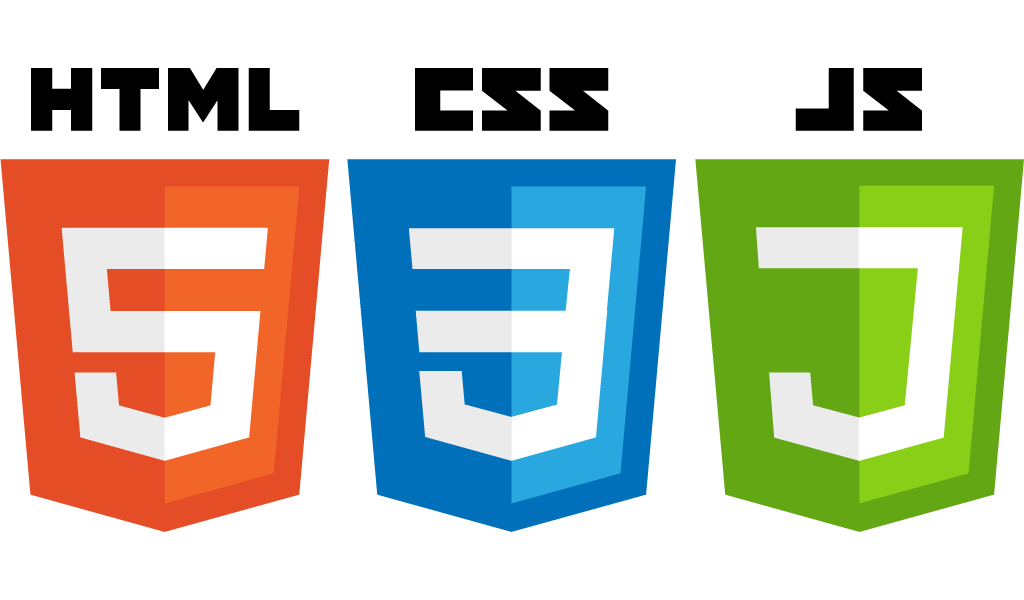
Installation Pre-reqs
- Node/NPM (nvm!)
- HomeBrew package manager
- yarn (optional, but recommended)
- Your favorite text editor
🐹
npm install -g ember-cli
ember new ember-quickstart
Quick High-Level Concepts
Docs are your friend if you forgetTopics
- Router
- Ember Data
- Routes
- Controllers
- Templates
- Components
- Services
- Core Concept: Computed Properties
Router
Defines all routes in your application
Does the work for you when a user navigates to https://your-app.com/users
Example
-
We want to build an app with the following routes:
- https://your-app.com/search
- https://your-app.com/admin
- https://your-app.com/users
- https://your-app.com/user/some-unique-id
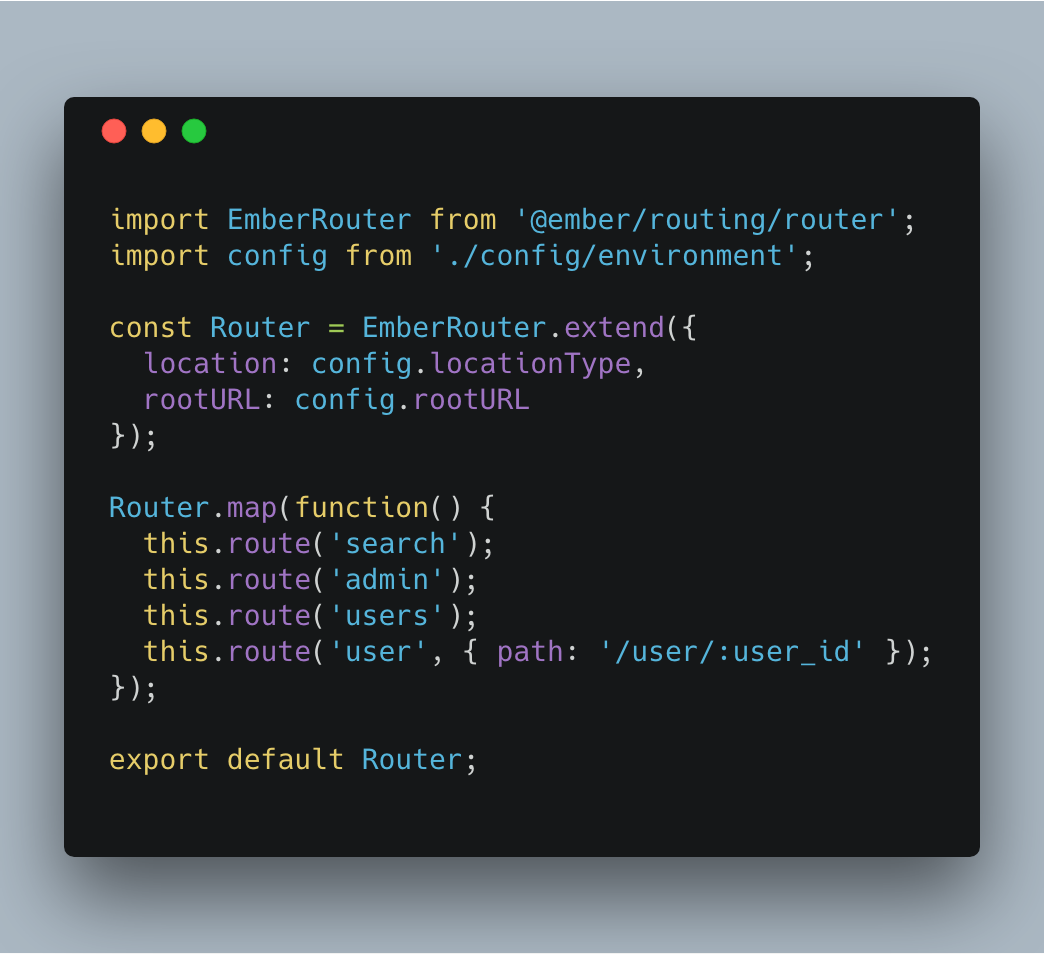
Ember Data
"...a library for robustly managing model data in your Ember.js applications."
Ember Data GitHubInteracts with a Persistence Layer
- Browser local storage (less likely)
- Used to make API requests to a server (more likely)
- Does your API use JSON:API or REST? 👍
Ember Data Concepts
- server responses ➡️ objects (ORM)
- Model: "the structure of the data you wish to provide to your application "
- Adapter: "...an object that receives requests from a store and translates them into the appropriate action to take against your persistence layer."
- Serializer: Used to tell what


Ember Inspector - helps you view what's in the store
You don't have to use Ember Data
Route Handlers (Route)
"...responsible for displaying templates, loading data, and setting up application state."
Ember Docs
ember generate route users
When you generate a route, a JavaScript file and Handlebars template are created
The route is automatically added to the router.js file for you
Recommended Usage
- Leverage the model hook(s) to load data
- The model hook will return a model to the controller/route template
- Handle transitioning cases ("are you sure?", removing things from the store, etc.)
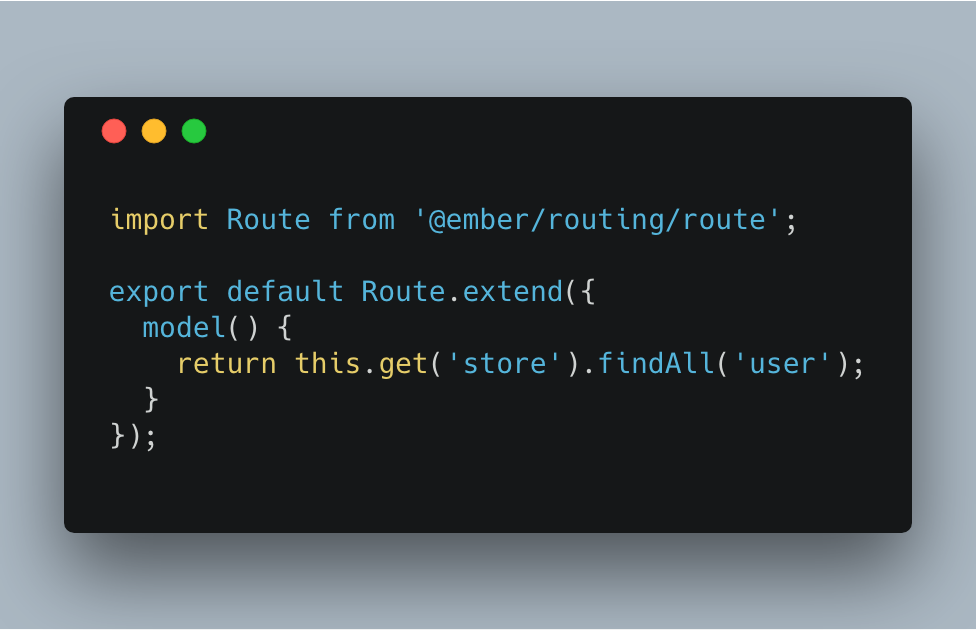
Controllers
"...routable object which receives a single property from the Route – model – which is the return value of the Route's model() method."
Ember Docs
ember generate controller users
Paired with a route of the same name
EX: /routes/users.js + /controllers/users.js- Define the model returned from the Route
- Define computed properties
- Sort/filter the model client-side
- Generate a property based on the model
- Define actions
- Event handlers for elements
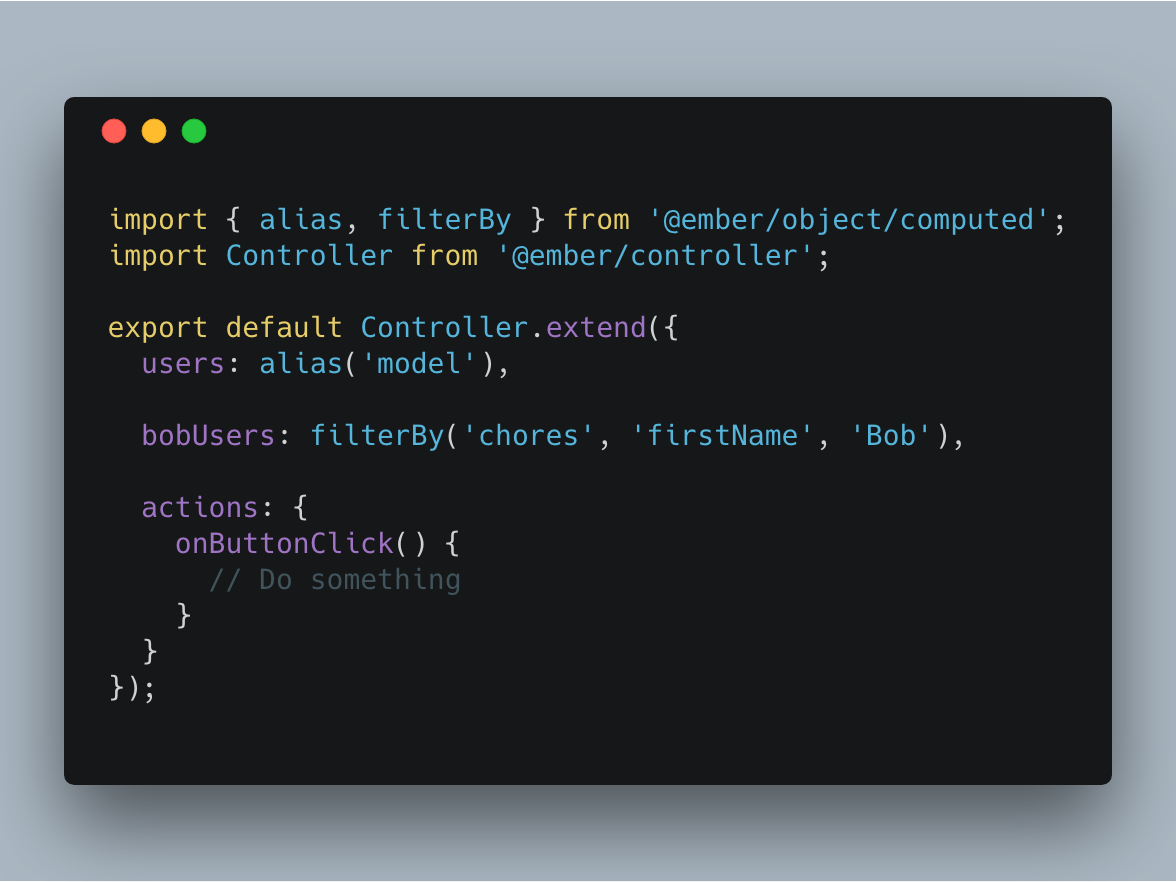
Templates
Combination of HTML + Handlebars
Receives properties from a Controller or Component and renders HTML
Think of your Route Template as your "page"
Typically made up of many HTML elements + componentsTemplates can render things differently based on what you pass them
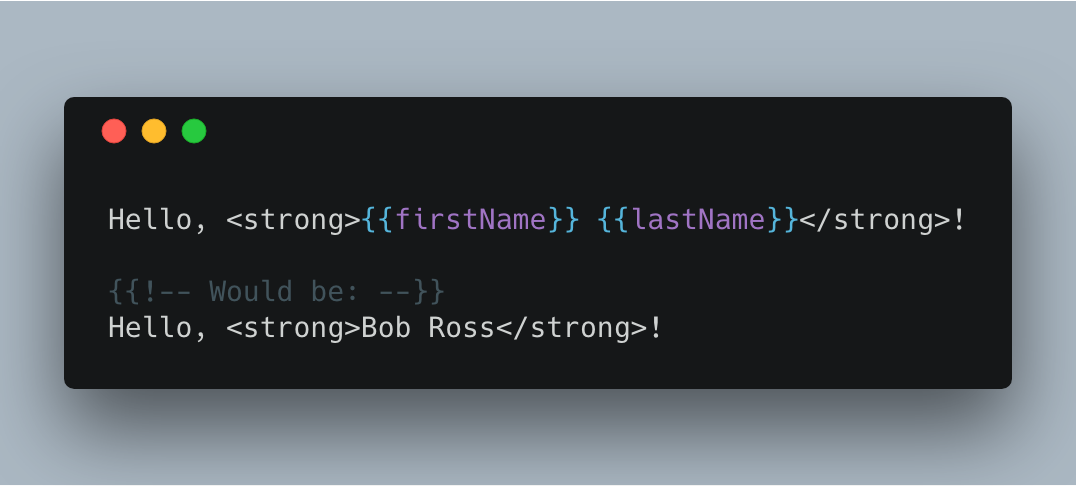
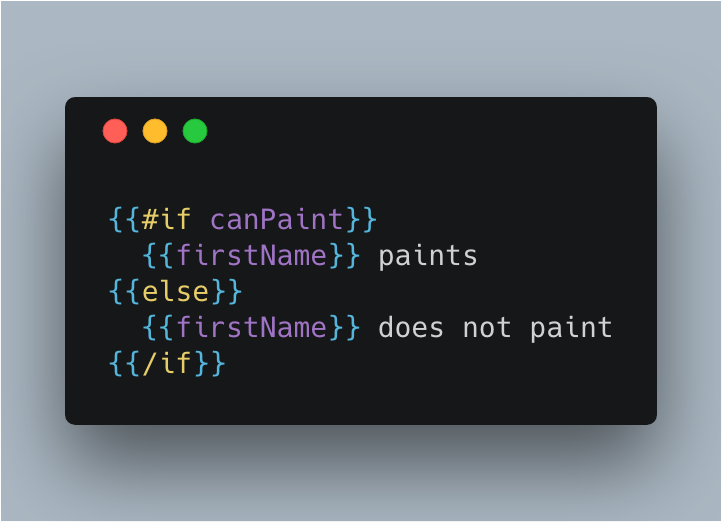
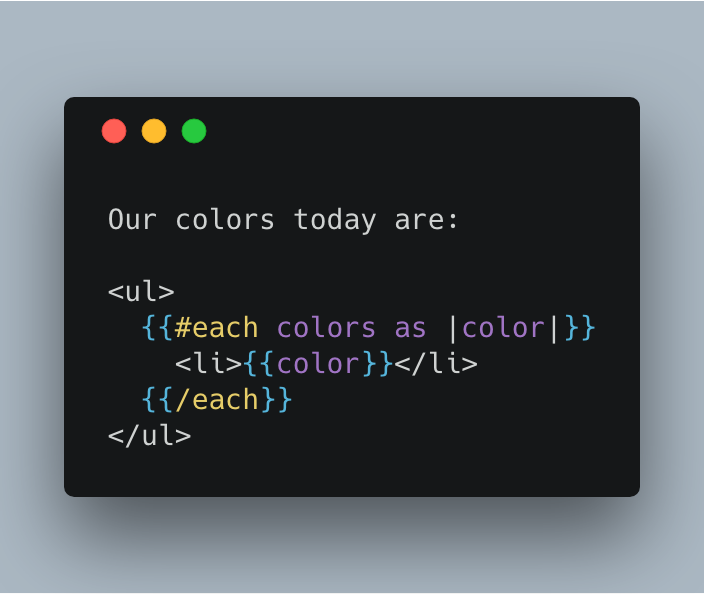
HTML + Handlebars = templates️
Components
"...used to encapsulate markup and style into reusable content."
Ember DocsDo you reuse some functionality a lot? May want to move it to a component.
(tests!!!!!)
ember generate component colors-card
When you generate a component, a JavaScript file and Handlebars template are created
You pass properties & actions into a component and it renders HTML
Example Components
- Themed Buttons
- Reusable text
- Info Cards
Made up of two files
- JavaScript file
- Handlebars template
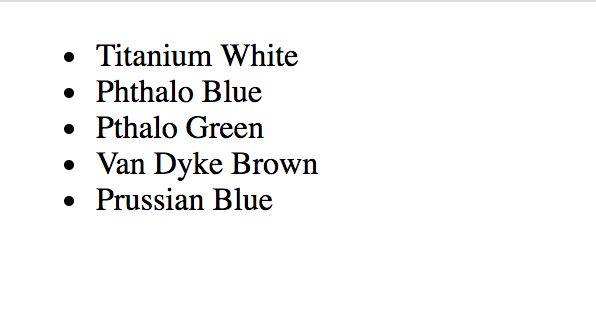
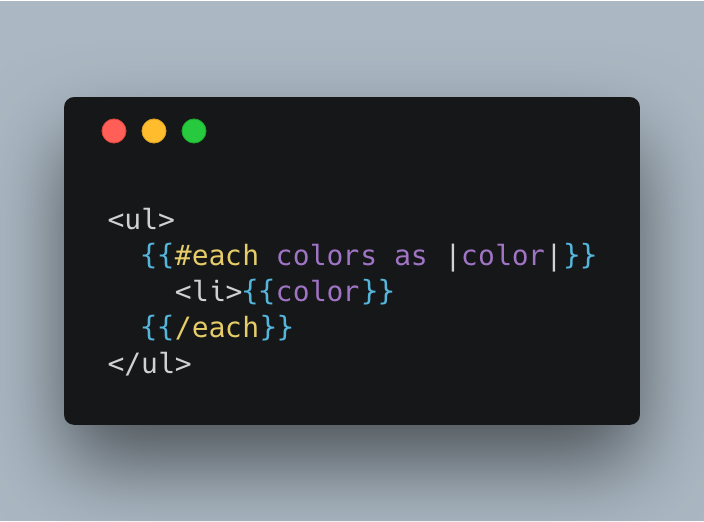
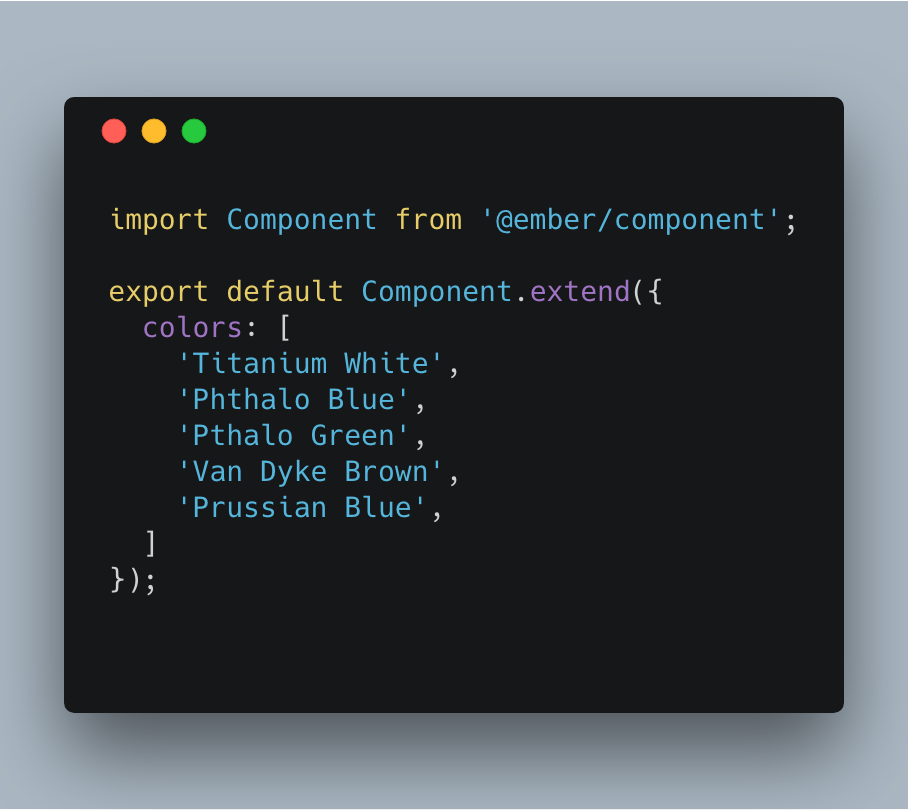
Using the Component
{{colors-card}}
{{!-- or... --}}
{{colors-card colors=(array 'white' 'blue')}}
Learn a bit more about ours!
Computed Properties
A property created that is dependent on one or many other properties
They get re-evaluated when the keys change
Lazily-loaded, so only compute when you ask about them or if something changes
Use Cases
- Viewing multiple properties and generating some result property
- Filtering/Sorting a collection
- Bool,Sum,Or,And,Equal,etc.(Computed Macros in Docs)
- Generating a class name for a component based on a property
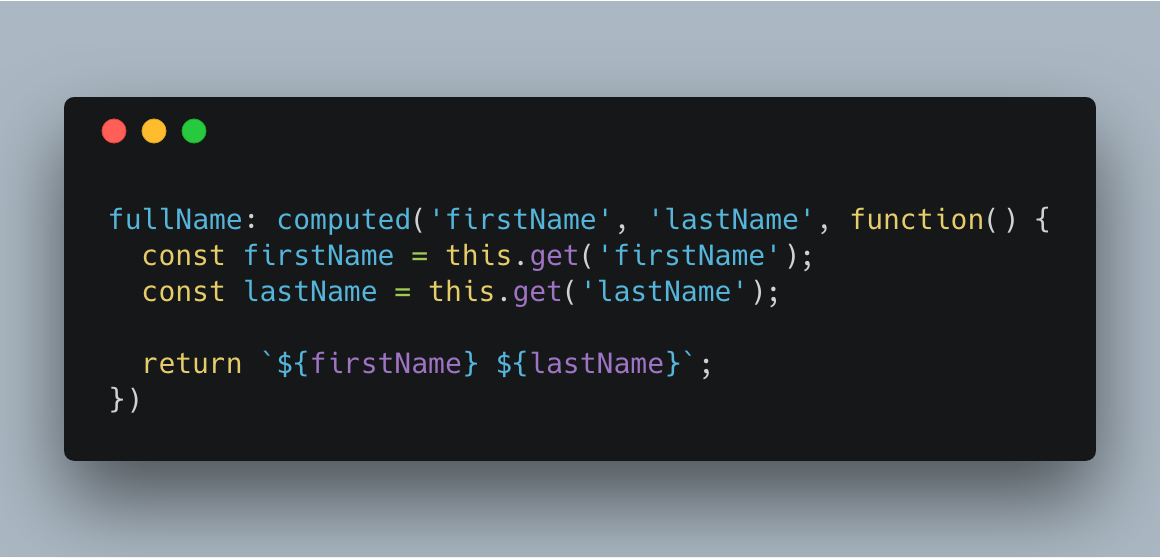
Services
"...an Ember object that lives for the duration of the application, and can be made available in different parts of your application."
Ember Docs
ember generate service my-service
Services can be injected into all of the other objects we already discussed
Services are singletons - think about state
Examples
- Translation service
- Auth service
- Logging service
- 3rd-party service